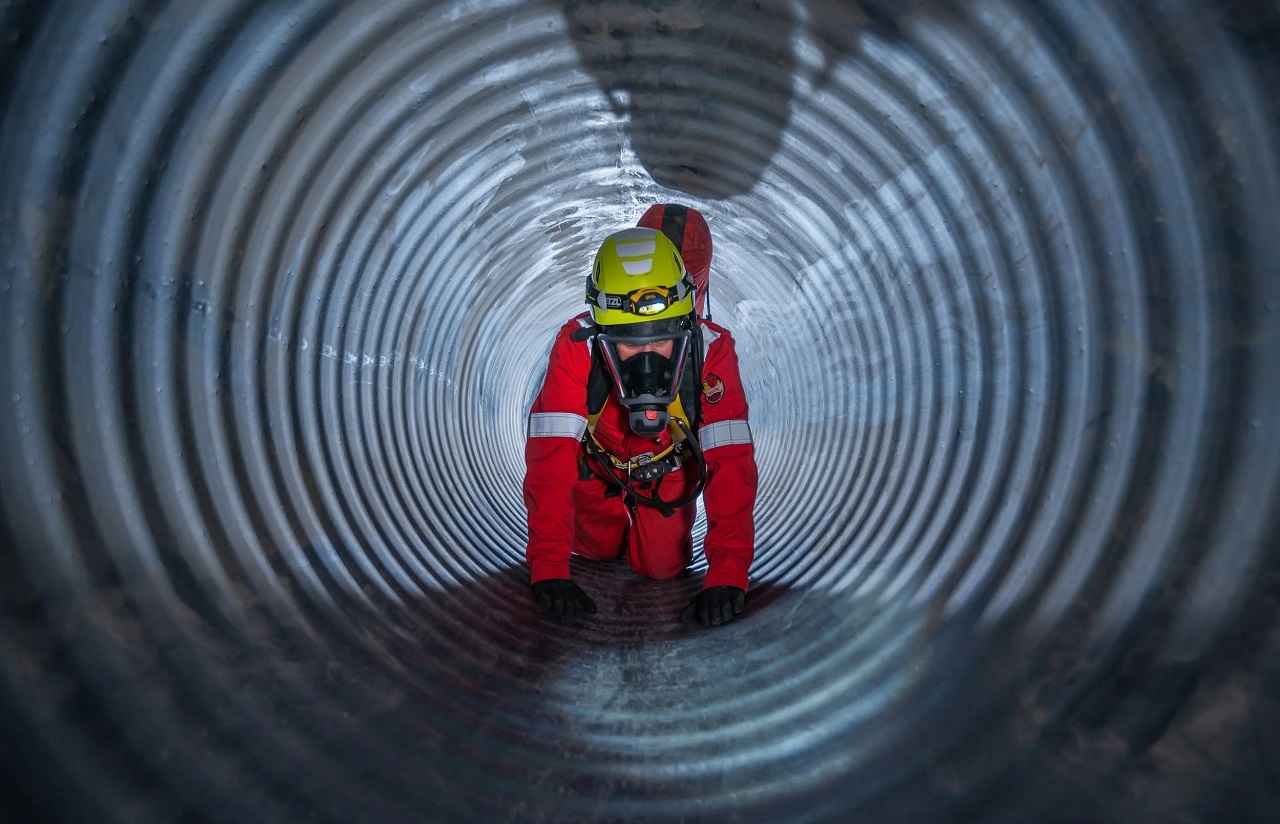
Workers’ safety is number one priority. Construction sites are hazardous places but some areas, such as confined spaces, are even more dangerous.
Confined spaces of all kinds; tanks, tunnels, crawl spaces, and underground vaults, present real and serious risks to the workers who perform tasks in and around them because of limited oxygen, toxic atmospheres, and restricted movement.
For workers operating in such spaces, even routine tasks can quickly escalate into life-threatening situations without the right safety measures in place. A critical element of safety in these areas is the presence of specially trained confined space rescue teams. These specialized units are not a luxury but a necessity, ensuring rapid response and effective intervention should an emergency occur.
Having a rescue team on standby can mean the difference between a close call and a tragic incident, making their role in the construction industry indispensable.
Understanding the Hazards of Confined Spaces
Confined spaces are defined by their limited entry and exit points, which can trap workers in emergencies. They are hazardous places to work and can become deadly, even faster than other emergencies in open work areas. Common hazards include oxygen deficiency, exposure to harmful gases, engulfment by materials, and mechanical hazards from equipment.
The Role of Rescue Teams in Confined Spaces
Confined space rescue is not something the average firefighter or officer is trained to perform. The work is simply too dangerous. Consequently, the average fire department does not tackle these high-risk, low-frequency incidents. The confined space rescue teams that work in these areas have very specific training and qualifications.
They operate under the National Fire Protection Association requirements, which dictate that a confined space rescue worker be able to confidently and safely perform the following: (1) retrieve a victim; (2) monitor the atmosphere in the space; and (3) communicate effectively with other team members.
Compliance with OSHA Regulations
The Occupational Safety and Health Administration (OSHA) enforces rigorous directives for entering confined spaces, especially those pertaining to rescue operations. According to OSHA’s standards for permitting entry to these areas, employers must guarantee that a rescue team is either on site or very close (and therefore available) to respond to confined space emergencies.
There are large fines and penalties attached to not complying with these regulations, but the most important reason for compliance is that it protects the lives of workers in these confined spaces.
The Importance of Pre-Entry Planning and Drills
An effective rescue is often determined before an incident ever even occurs. The rescue workers have a crucial role in pre-entry planning, conducting hazard assessments, and establishing rescue procedures specific to the conditions of the site.
Regular emergency drills and simulations are necessary to ensure that workers and rescue teams are primed for real-life scenarios. This preparation enhances response time, coordination, and ultimately, the success of rescue operations.
Confined Space Rescue Teams Are Non-Negotiable for Worker Safety
Work in confined spaces carries inherent risks. But these dangers can be managed. The most effective means of hazard mitigation calls for hard work and foresight, the preparation of would-be confined space entrants, their supervisors, and, most importantly the confined space safety team. This is the kind of work that, if done right, makes the task safer, more efficient, and much less likely to lead to an incident.







